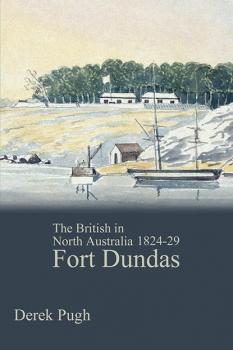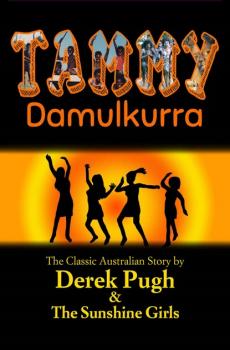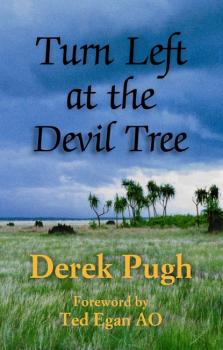ТОП просматриваемых книг сайта:
Derek Pugh
Список книг автора Derek PughАннотация
In the best tradition of Paul Theroux and J. Maarten Troost, comes Derek Pugh's torrid tale of Sumbawa, and his ascent of the iconic volcano Mt. Tambora, whose 1815 eruption did indeed change the world.<br /> <br />Pugh's account of the eruption and its aftermath is masterfully done – clearly the product of much dogged research through archives, scientific journals, as well as conversations with Indonesians lasting long into the steamy night.<br /> <br />Himself a long-time resident of the neighboring Indonesian island of Lombok, Pugh is a well-qualified tourist who also brings a wry and rollicking insider's account of local and ex-pat life along the volcanic chain of islands.<br /> <br />The reader meets a wonderfully diverse cast of characters, from pre-schooler jockeys, to an ancient princess alone in her decaying Sultan's palace, to brainless Western surfer dudes and their chicks who have no clue about the history of the slacker's paradise they've stumbled upon.<br /> <br />Pugh does a sterling job of filling that gap in Asian travel writing, as the many-layered dimensions of Sumbawan culture – their strict Islamism, great friendliness, and intermittent traumas, with the colossal Tambora looming across every page – unfold to the reader like layers of volcanic earth from a hidden Pompeii.<br /> <br />Gillen D'Arcy Wood, author of Tambora: The Eruption that Changed the World (Princeton University Press, 2014)
Аннотация
Fort Dundas was the first outpost of Europeans in Australia's north. It was a British fortification manned by soldiers, marines and convicts, and built by them on remote Melville Island in 1824. It lasted until February, 1829, when it was abandoned and left to the termites.<br /> <br />The fort's purpose was twofold. Firstly, it was a physical demonstration of Britain's claim to the New Holland continent as far as longitude 129E, which excluded the Dutch and the French from starting similar colonies, and it was the first of a series of fortified locations around the coast. Secondly, it was promoted as the start of a British trading post that would become a second Singapore and compete with Batavia.<br /> <br />The settlement was named in a ceremony on 21 October 1824, but it was not a success. In its short existence we have tales of great privation, survival, greed, piracy, slavery, murder, kidnapping, scurvy, and battles with the Indigenous inhabitants of the islands, the Tiwi. It was also the site of the first European wedding and the birth of the first European children in northern Australia.<br /> <br />None of the three military commandants who managed the outpost wanted to be there and all were gratefully relieved after their posting. They left behind thirty-four dead – victims of disease, poor diet and Tiwi spears. Others died when the crews of the fort's supply ships were slaughtered and beheaded by Malay pirates on islands to the north. Two cabin boys from one of them, the Stedcombe, were enslaved by the pirates.<br /> <br />What happened at Fort Dundas and why it was abandoned has been largely untold. Nevertheless, it is one of the most engaging stories of nineteenth century Australia.
Аннотация
"a landmark in Australian literature" Maurice Rioli, MLA<br /> <br />Fifteen year old Tammy Damulkurra lives in Maningrida – a remote Aboriginal community in Arnhem Land. Tammy has friends and likes the disco and thinks at last she has her first boyfriend but he cheats on her and Tammy gets into a fight with her arch enemy, Sharon. Tammy's parents send her to the outstations for several weeks to cool off and she quickly gets used to the bush and fishing and hunting with relatives. When she returns to Maningrida her love life is a mess and it's not until she leaves again for school that she realises that it's all going to be okay.<br /> <br />Originally released in 1995 this second edition celebrates two decades of literacy education in remote communities in Australia.<br /> <br />"a story that will strike chords with many teenagers," with a «naive quality and adolescent voice (which) makes it instantly accessible» B Richardson<br /> <br />First Published 1995
Аннотация
Accompanied by Turkey, his little 'hunting' dog, Derek Pugh founded several outstation schools in the most remote parts of Arnhem Land and gained a rare insight into a traditional way of life which has been witnessed by only a few outsiders.<br /> <br />By turns reflective, tragic and hilarious, Turn Left at the Devil Tree is a memoir of a visiting teacher among the Indigenous people and wildlife of the Top End of Australia. It is also a history – revealing some little known and disturbing events that were sanctioned from the highest levels of government.<br /> <br />Life there was «frustrating at times, but always a challenge and Derek has recorded his experiences beautifully in this delightful book». Ted Egan AO




